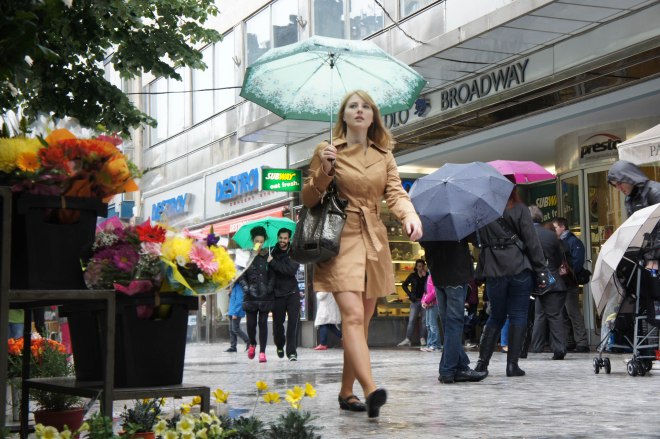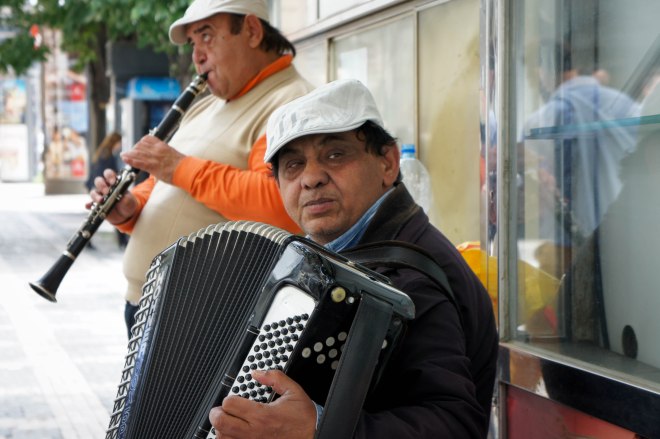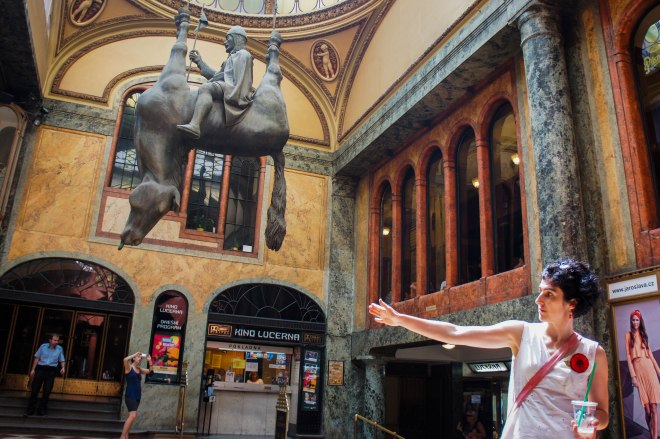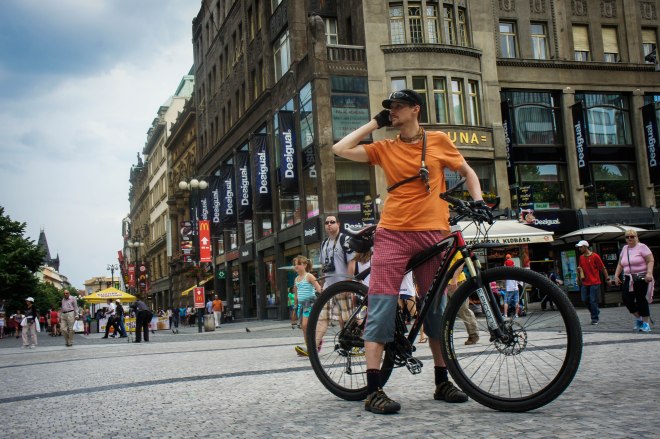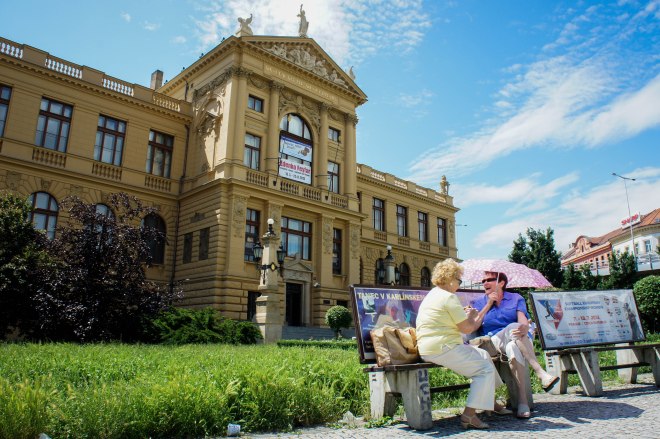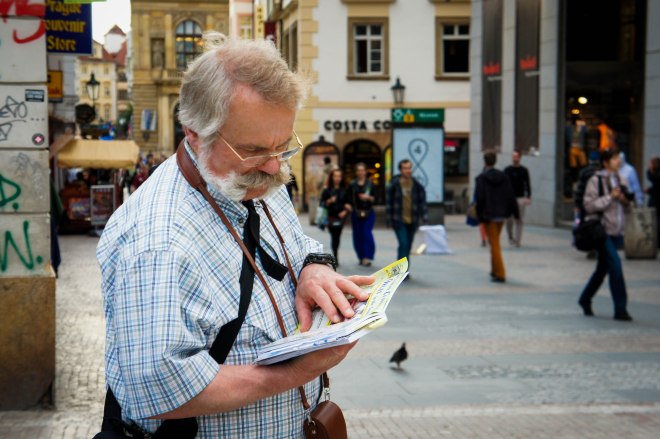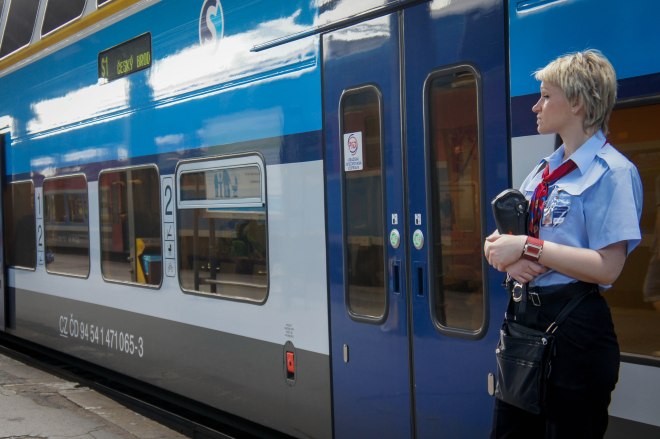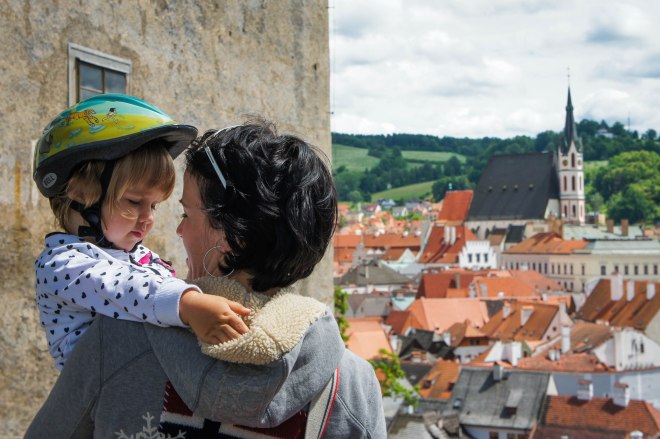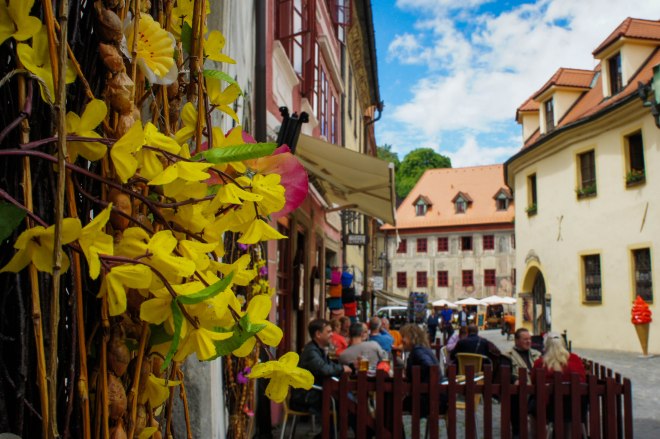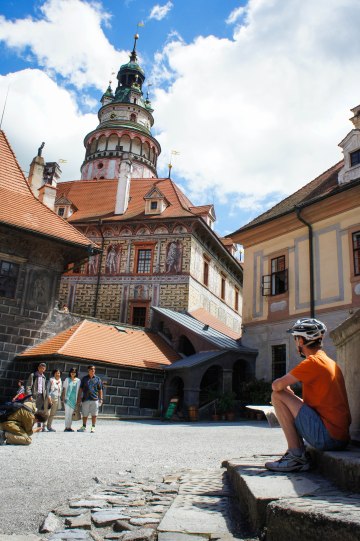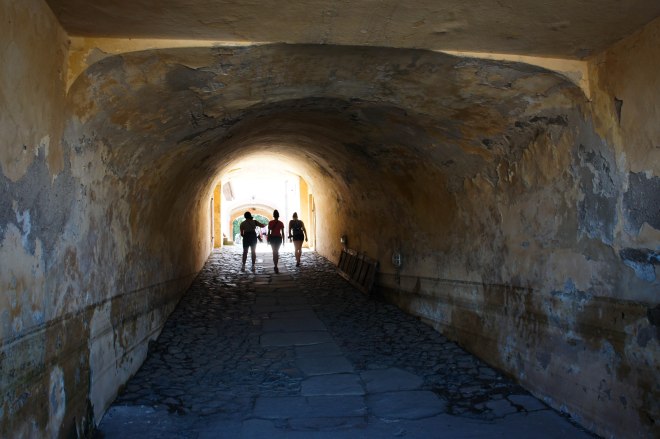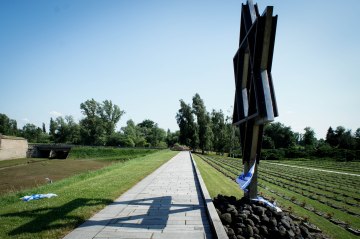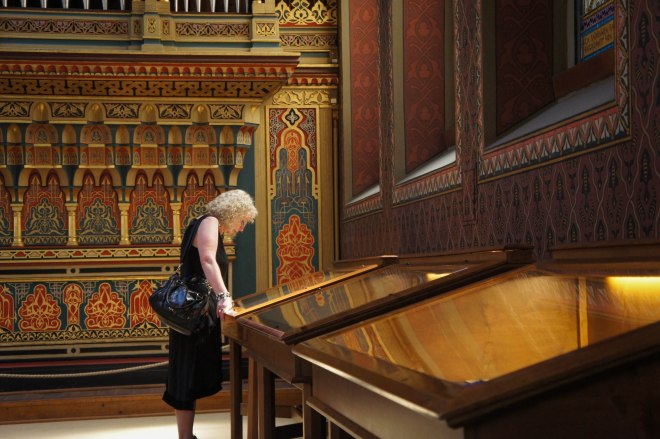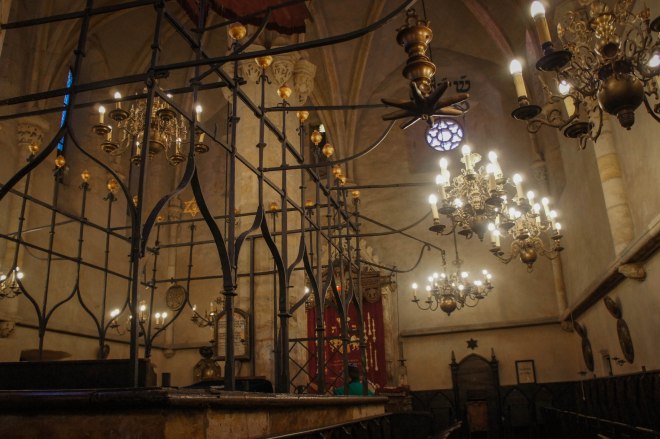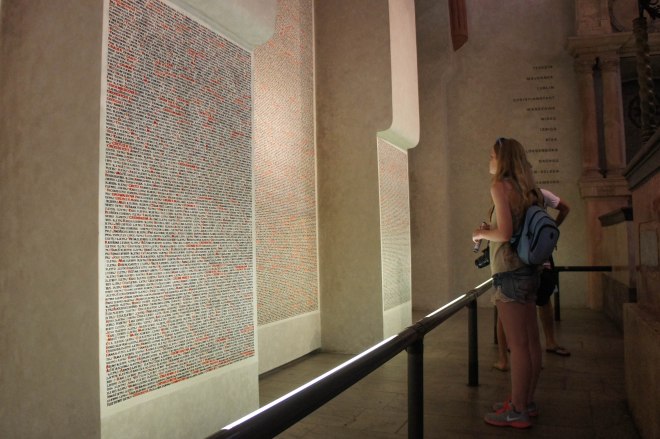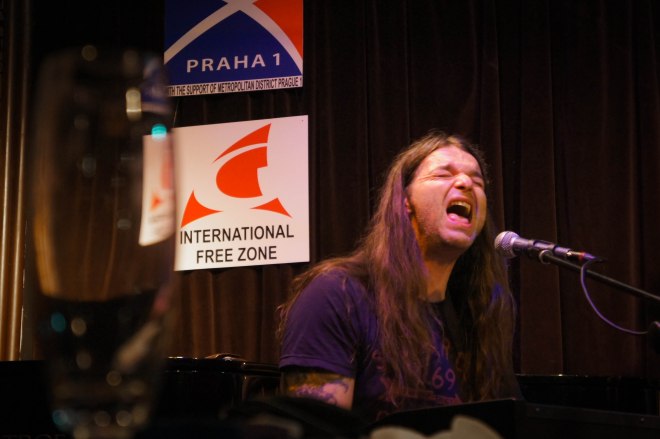Author Archives for caitlinobrien822
Travel Story: Český Krumlov
Not From These Parts: Last Stroll through Old Town Square
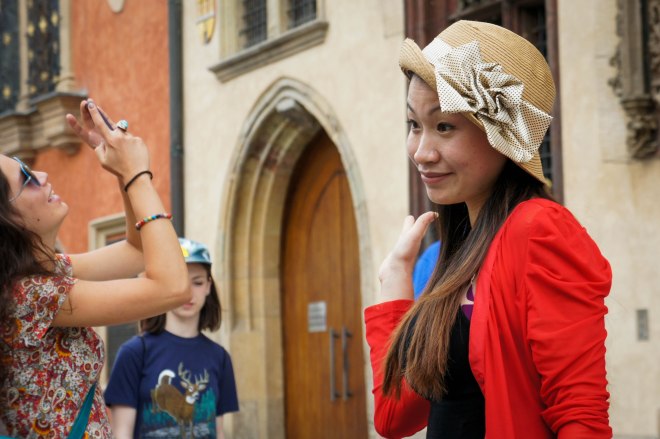
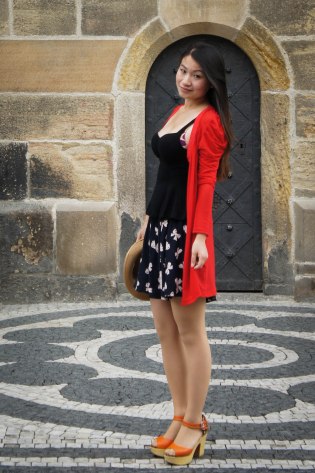 Yesterday I decided to have one final walk around Old Town Square to get a glimpse of all the festivities laying within the beautiful architecture. I saw the usual: a wedding, a live band, and a handful of street performers. This square will never get old or boring, and I don’t want to leave it behind. I can’t believe time has slipped away this fast from the beginning of the trip. It seems like yesterday I was that crazy tourist, photographed above, posing for pictures in front of the astronomical clock. Now at the end of my trip, it’s hard to look at the tourists the same way when you are starting to not feel like a tourist yourself.
Yesterday I decided to have one final walk around Old Town Square to get a glimpse of all the festivities laying within the beautiful architecture. I saw the usual: a wedding, a live band, and a handful of street performers. This square will never get old or boring, and I don’t want to leave it behind. I can’t believe time has slipped away this fast from the beginning of the trip. It seems like yesterday I was that crazy tourist, photographed above, posing for pictures in front of the astronomical clock. Now at the end of my trip, it’s hard to look at the tourists the same way when you are starting to not feel like a tourist yourself.
While walking through the square, I saw a group of girls sweating with frustration as they were reading a giant Prague map. It was strange to think that only four weeks ago, that was me. I remember thinking that there is no way I am going to be able to get to know this city. However, just yesterday I remembered I had to take something back to the Pallidium (the Prague Mall), and I quickly hopped on the 24 and rode straight to the mall and then I ran into a market to pick up some snacks before heading to my apartment. This easy task wouldn’t have seen as simple in the beginning of my trip. Now getting around town seems like nothing! It’s exciting to think how far everyone in the class has come from those tourist days. I know I’ll always be considered a tourist while I’m here since I’m not from these parts, however it was fun learning the ways of the Czechs and getting to know the wonderful city of Prague.
Morning Glory: Crossroads Cafe
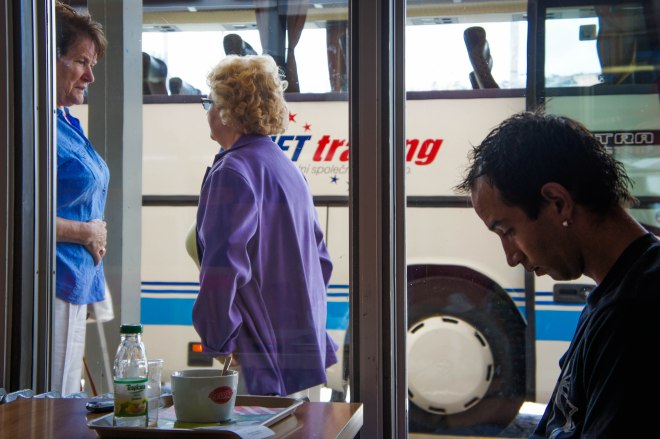
Sunday morning I journeyed to Florenc to shoot my metro stop photos. I ran into a giant bus transportation center where people from all over Europe leave or arrive in Prague. I took a break at a small coffee shop in the middle of the bus station called the Crossroads Cafe. Here I could look out of the large windows to observe the busy bus station. Frantic lost tourists stepped off their buses and immediately ran to find maps. Many visitors were excited to be in a totally new place. I couldn’t help but think about all the means of transportation and how without it, we wouldn’t be connected with the rest of the world. I remember flying over to Prague and thinking I was in a dream when I stepped off the plane. It was crazy that after 12 short hours (it seemed short since I fell asleep), I could been on the other side of the ocean. In Prague, public transportation is a huge deal. With one metro pass, you can basically go anywhere in Prague with a few simple rules. Just don’t forget your pass (or you’ll be fined), make sure you and your friends are not too loud (or you will be shushed), and stand on the right side of the escalator (or you’ll be pushed around), and give up your seat to the elderly that walk on board the tram.
Thinking about all this makes me wish that we had a tram or metro system in Austin. It’s nice to be able to look at a map and go to any part of the town by taking a few trams. Where would we be without our trains, cars, boats, and planes? We would be stuck in one place and wouldn’t be able to experience the world. After sipping on my simple black coffee, these thoughts were too much to handle early in the morning.
Weekend Miser: Zoo Praha
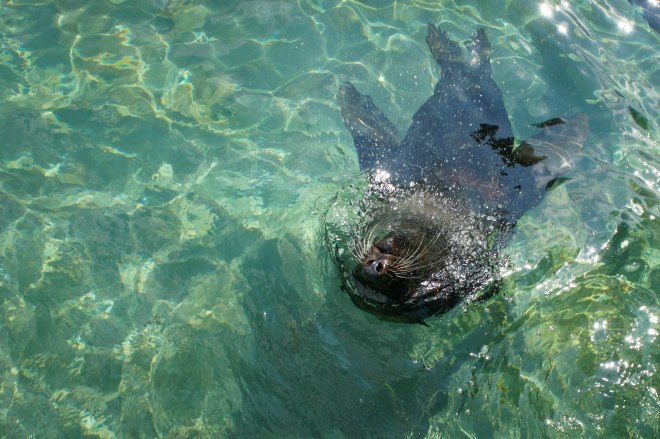
When I think of a zoo, I usually think of a crowded sweaty place packed with yelling kids (aka the Houston Zoo). This was not the case for the Prague zoo. The Prague zoo was like no other I’ve ever been to before. It was tranquil and peaceful. The zoo was spread out across many acres that mimicked a natural habitat. My favorite section was the giraffe area. The outer surroundings held many tall trees and hills with a few Czech style houses in the background. The calm atmosphere made me almost forget that I was at a zoo.
Another surprising aspect about the Prague zoo was its huge size. My handy iPhone calculated that we walked 6 miles that day. Each animal’s area looked completely different from one another and it was spread out far from the next section. Some areas were not only giant in length, but in height. For example, the mountain goats had tall rocky hills to walk up. Also, there were many exotic animals that we had never seen before in America. I saw a toucan with four beaks that looked like a bunch of bananas. We saw strange monkeys that came up to the fence to say hello to all its visitors. Overall, this was an enjoyable weekend activity set at a good price. There was a nice shaded eating area with inexpensive hot dogs, gelato, and yes, even beer. We had such a relaxing time at the zoo that we wanted to stay all day!
A Thousand Words: Terezín Artists
A picture is worth a thousand words. I’ve always been familiar with this saying, but I never realized the true complexity of a picture until I visited Terezin. Terezin is a town that was turned into a concentration and transit camp that housed thousands of Jewish prisoners. Within Terezin we visited a museum that held artwork from artists living within the concentration camp. When I entered the museum, I learned that the Nazi’s had a drawing room in which imprisoned artists would create propaganda. Unfortunately, the Nazi’s forced the artists to draw the concentration camp in a positive light. The SS wanted outsiders to believe that Terezin was a nice spa-like working camp. While gritting their teeth, the artists had to lie and pretend the horrible place where they lived was a lot better off than reality. First picture below is an example of the forced propaganda artwork.
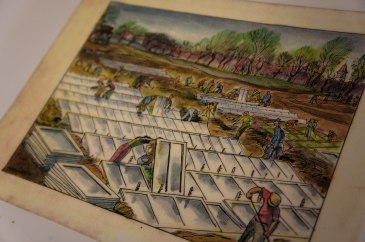 Propaganda Artwork
Propaganda Artwork
“Gardening” by L. Haas
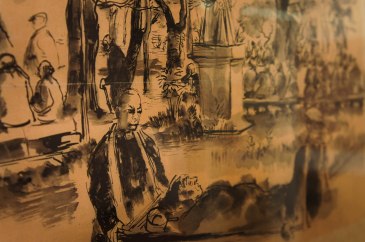 Depiction of ghetto surroundings
Depiction of ghetto surroundings
“Yard in Hohenelbe Barracks” by L. Haas
While the SS believed that the artists were always busy drawing beautiful pictures of Terezin, the imprisoned artists were creating secret masterpieces. In the draft room, the artists would draw the actual depiction of their concentration camp and ghetto surroundings. Photographed above is one of the art pieces that shows Terezin as it truly was, a dark place filled with sickness and death. Often the artists would try to smuggle out these real art pieces to show the public what terrible conditions they actually lived in. However, the artists were caught and accused of spreading “propaganda of horror”. They were sent to a Gestapo prison and did not survive. Since hundreds of their art pieces are displayed within the museum, their artwork luckily lives on and still sends a powerful message. The pictures that the daring artists risked their lives for are worth a thousand words by showing all the wrong that was behind the concentration camp gates.
155,000 people passed through the Terezin concentration camp. However, 35,000 died within the camp and over 80,000 died after being sent to extermination camps. Our class was lucky enough to meet with a survivor of Terezin, photographed below. We also went on a tour of Terezin. As one can imagine, this was the saddest place that I have ever visited.
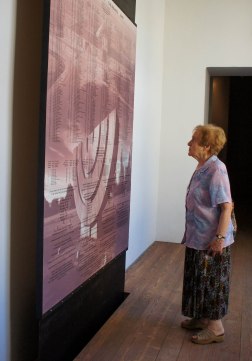 Doris Groszdenovicova
Doris Groszdenovicova
A Terezin concentration camp survivor
 A memorial to those who lost their lives
A memorial to those who lost their lives
within the concentration camp
Small Wonder: Children at the Mucha Exhibit
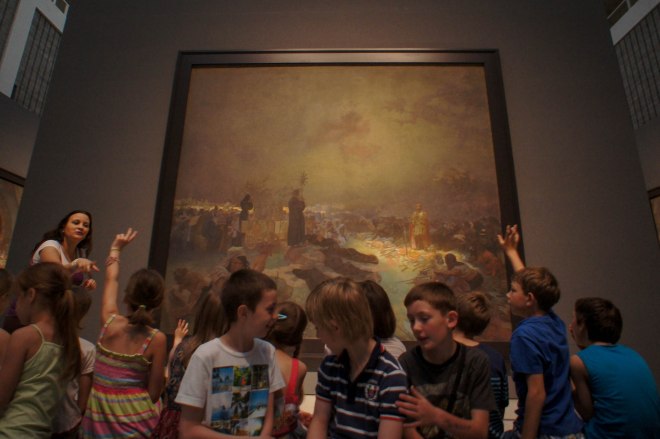
At the beginning of our study abroad trip, we were introduced to Alfrons Mucha, a very famous artist from the Czech Republic. The first time we viewed his artwork, we visited the Obechi Dum to look at a special exhibit that displayed his lithographs. We visited two rooms that showed almost all his original advertisement posters for various events and people. The collection was owned by the tennis player Ivan Lendl and it was a rare event to see almost all the pieces in one place. Mucha seemed like a visual genius. His use of symbols and hidden meanings within his artwork made the posters so captivating and interesting. After the exhibit, I was excited to find out that we were going to Veletrzni palac 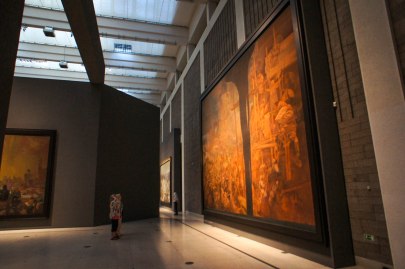 to see Mucha’s most legendary exhibition, the Slav Epic. The Slav Epic is a series of paintings that convey the journey of Slavic and Czech history. Before coming to Prague, I had never heard of the Slav Epic, and I was happy to find a class of young children learning about the Slav Epic in the art museum. We never learned anything like that in my art class in elementary school! I walked around the class to notice the details of the children’s reactions to the paintings. I realized all the children were eager to ask questions about the giant artwork in front of them. Many were raising their hands and jumping up in down in excitement. The Slav Epic paintings were gigantic and overpowering. I can’t imagine how tall they seemed in the little children’s’ eyes. I was glad to see the small class learning more than simple finger painting and crafts like I did in elementary school. Instead, the Czech children were learning about their country’s history in a very unique way.
to see Mucha’s most legendary exhibition, the Slav Epic. The Slav Epic is a series of paintings that convey the journey of Slavic and Czech history. Before coming to Prague, I had never heard of the Slav Epic, and I was happy to find a class of young children learning about the Slav Epic in the art museum. We never learned anything like that in my art class in elementary school! I walked around the class to notice the details of the children’s reactions to the paintings. I realized all the children were eager to ask questions about the giant artwork in front of them. Many were raising their hands and jumping up in down in excitement. The Slav Epic paintings were gigantic and overpowering. I can’t imagine how tall they seemed in the little children’s’ eyes. I was glad to see the small class learning more than simple finger painting and crafts like I did in elementary school. Instead, the Czech children were learning about their country’s history in a very unique way.
Location Notations: The Jewish Quarter
Yesterday’s tour consisted of visiting five synagogues in Prague. To get a feeling of sense of place in the Jewish quarter, I will tell you what stood out to me from the long tour. First our tour guide explained the history of the Jewish population in Prague. During the Nazi rule, many synagogues and Jewish buildings were destroyed. However, the Nazi’s decided to keep the Jewish Quarter untouched in order to create a museum of an “extinct race”. As twisted as that may be, our tour guide was still happy that many significant parts of Jewish history in Prague were saved. After visiting such beautiful buildings and historical pieces, it was not surprising to find out that Jewish Museum is actually the most visited Jewish Museum in the world.
The first synagogue we visited was the Old-New Synagogue, the oldest lasting synagogue in Europe that is still in use today. It’s name comes from being called “New” compared to its past buildings that did not survive. The building had an interesting layout because the site is so old that it was created when women were not allowed to join in prayer at synagogue. Later on, women and men were allowed to pray in the same synagogue, but a women’s section was always created to separate men and women to avoid distraction.
One of the most touching sites we visited was the Pinkas Synagogue, a memorial to those who did not survive past the Nazi occupation. The walls contain names of over 180,000 Jews with their names, dates, and place of birth. The vast number of names surrounding you is overwhelming and devastating. There are literally names wall to wall in the building. The names were handwritten on the walls and you could even still see the pencil marks from the writing. I thought the handmade design gave it a more real and personal feeling.
Another fascinating site was the crowded Old Jewish Cemetery, with the oldest tombstone dating back to 1439. The cemetery had five layers of bodies beneath the surface in a “bunk bed-like” fashion, as our tour guide put it.
Before our tour of the Jewish Quarter, I couldn’t tell you much about Judaism. This tour meant a lot to me because I have always wanted to know more about the common religion of Judaism. The tour was a great opportunity to learn more about the religion, especially from someone who practices the religion herself.
The Nocturnalist: Jazz Club
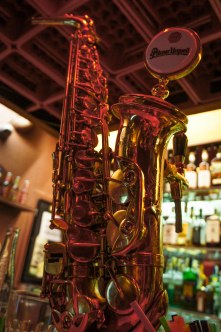 Since it is our last week in Prague and many of us are not sure if we are going to see each other again, we decided to celebrate the end of our journey together by going out and having fun in the city. It’s crazy to think that since we have graduating seniors in our study abroad group, there might be a chance that we will not see each other again. It made perfect sense to spend time together with the whole group.
Since it is our last week in Prague and many of us are not sure if we are going to see each other again, we decided to celebrate the end of our journey together by going out and having fun in the city. It’s crazy to think that since we have graduating seniors in our study abroad group, there might be a chance that we will not see each other again. It made perfect sense to spend time together with the whole group.
We ended up going to a Jazz Club that had a live band playing blues music for the night. The band was a local group from the Czech Republic. I was curious to see what blues music would be like in another country. Surprisingly, I knew or recognized most of the songs. There’s so much to do here in Prague, that I did not doubt that we could see such a great band. They were amazing, especially the drummer. He had multiple solos and he knew how to keep the crowd entertained. Even though the band members were from the Czech Republic, I couldn’t help but be reminded of home in Austin. Despite the fact that we speak different languages, not only our music, but the feeling you get from the music can be really similar. Overall, it was a great night to spend time with new friends (that already feel like old friends) and listen to comforting music.
Wenceslas Square Architecture Tour
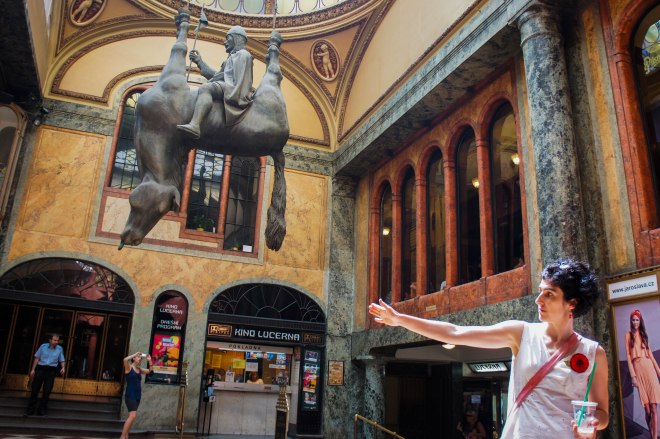
Today our class met in Wenceslas Square for an architecture tour. I figured we would start at the Square and venture out to far distances in Prague. Yet, I didn’t realize how much interesting architecture and history we could cover in a small area. The tour mainly consisted of comparing different buildings’ architectural styles, with Art Nouveau being the most prominent style we looked at. The tour guide started with an explanation of how Art Nouveau buildings were being constructed at the same time as neoclassical buildings. The two architectural styles were almost in a competition of which one was the best. At the time, many people wanted to see something new and fresh in the city and they were tired of neoclassical architecture. However, when the elaborate Art Nouveau style was introduced in Prague, there was a lot of opposition to the style because it was so different. We looked at many Art Nouveau buildings, but my favorite had to be the well known Café Imperial. The Café Imperial was filled with ceramic tiles and mosaics of the most intricate detail.
The other Art Nouveau building that stood out to me was the Lucerna Palace. It had a oriental style and was filled with impressive marble. Photographed above is a sculpture placed in the Lucerna Palace. The Upside-Down Horse sculpture, by the infamous Czeck artist David Cerny, is comically placed in this building. It’s hard not to miss the sculpture when it sharply contrasts with the architecture around it.
Another style that I thought was really interesting was the Cubism architecture. Cubism architecture is an unique architecture style that branched off from Cubism art work (for example, Picasso). As told on the tour, Cubism architecture is only found in Prague. A famous example of Cubist architecture would be the House of the Black Madonna. The building looks much more modern compared to those around it due to it’s geometrical shapes within the structure. Even though today was scorching hot, I was happy that we got to go on this tour because we learned so much in a short amount of time. Now I want to go back and visit many of the architectural sites and possibly get a coffee to drink in the view.



